Perennial Gelenium: varieties, planting and care in the open field
Gelenium is a well-known plant native to gardeners from Central and North America. This sunny flower came to Europe at the beginning of the 18th century and soon took its rightful place in the gardens of different countries. The color of the petals of gelenium is golden, red, brownish, and the middle is always darker, convex. Various plant varieties bloom from July to October. Due to the variety of forms, spectacular appearance, unpretentiousness, the perennial has gained its popularity.
Description and varieties of perennial helenium
The perennial flowering plant helenium in the wild has more than 3 dozen varieties. Some species reach a height of 1.6 m, but most of the representatives of this culture are much lower - 0.5-1 m. The stem of the plant can be weakly branched or densely branched. Shoots are smooth or slightly pubescent. The leaves are arranged alternately, more often they have a lanceolate shape.
The flowers resemble a hemisphere in appearance. Their central convex part is framed by elongated petals with a ribbed surface. The color and degree of doubleness of the gelenium flowers depends on the variety. The flowering of this representative of the Asteraceae lasts from 30 to 45 days. Different types of perennial helenium can be grown in the open field. The description of the most popular varieties is of interest.
Autumn Gelenium
Autumn helenium blooms in July - August. The plant is very fond of light and fertile soil. For lush flowering, it needs pruning faded buds and pinching off the shoots. Breeders have bred many interesting varieties of autumn helenium.
"Pumilum Magnificum"
One of the most famous varieties of this species is Pumilum Magnificum. The plant is a compact shrub 60–70 cm high with strong erect shoots. The inflorescence consists of a yellow-brown basket surrounded by golden petals. The bushes bloom in late July and finish flowering by early autumn.
"Moorheim Beauty"
Depending on the growing conditions, the height of the plant can vary from 90 to 150 cm. The color of the flowers is bronze-red. The plant is suitable for the background of flower arrangements. It can be planted singly or in a group. The variety is often used to decorate fences and buildings.
Helenium hybrid
According to the botanical classification, helenium hybrid includes various forms of indeterminate origin, originating from autumn helenium. It is to this group that the most popular varieties of heleniums belong.
Gelenium "Rubintswerg"
In translation, the name of the variety sounds like "ruby gnome". Gelenium "Rubintswerg" belongs to the compact varieties. The bushes of this variety are only 65 cm high. The flowers have a rich bright red color. The plant blooms in late July. This variety is often confused with another variety - "Rosie Jam".
Gelenium "Double Trouble"
Another favorite of many hybrid geleniums. Plant height reaches 0.7-1 m. Inflorescences are baskets 3-5 cm in diameter, collected in shields. Flowers of "Double Trouble" are yellow, double, with a greenish center. The variety is distinguished by abundant and long flowering, lasting from June to September.
Growing helenium from seeds
When growing gelenium from seeds, planting and care does not require special skills. Even a beginner can get beautiful flowering plants on his site. Sowing outdoors is best done in the fall. During the winter, the seeds will undergo stratification, and after the snow melts, shoots will appear in the spring.
Since helenium is a perennial, you need to choose a suitable place for it where it can grow for several years.
Landing requirements:
- It is necessary that the site is well lit by the sun and protected from drafts.
- The soil should be slightly acidic, nutritious and breathable.
- A flower bed for sunny flowers is prepared in advance, until the ground is stuck in frost.
- The site needs to be dug up, weeds and various debris must be removed from it.
- It is advisable to add compost or humus for digging.
As soon as the soil is dug up and fertilized, holes for sowing are marked on the flower bed. Perennials are sown when the first frosts pass. The holes are filled with seeds and covered with dry earth. From above, the crops are mulched with peat. After the first snowfall, snow is poured onto the flower bed. To protect the seedlings from return frosts in the spring, a cover in the form of a black film or spunbond is used.
Growing seedlings of helenium
For colder regions, it is recommended to grow helenium through seedlings. From containers, you can use elongated plastic containers or wooden boxes. As an earthen mixture, a purchased substrate for flowering plants with the addition of sand and peat is suitable.
Seeds are spread on the surface of the soil with an interval of 2-3 cm, with a denser sowing, the seedlings will stretch out. Then they spray the ground, cover the container with a film and put it in a warm place. It may take several weeks before the first shoots appear. As soon as the sprouts appear, the container is moved to a lighted place and the shelter is removed.
Seedling care:
- With a short daylight hours, the seedlings will need additional lighting.
- Watering the seedlings is carried out with settled water at room temperature. Water the seedlings regularly, but in moderation.
- After the appearance of 2-3 true leaves, the seedlings dive in separate pots.
So that the plants do not experience stress, 2-3 weeks before planting seedlings in open ground, they begin to harden them, briefly taking them out into the open air or opening a window. In the middle lane, seedlings are planted in the ground in the second half of May. In the south, this can be done 2 weeks earlier, and in the northern regions, on the contrary, later. In the prepared flowerbed, holes are made at intervals of 30 cm. Before planting helenium, the earth is abundantly shed.
Plant care
Since helenium is a perennial plant, it needs to be carefully cared for. Taking care of flowers, they carry out the following agrotechnical measures:
- Watering. In moderately warm weather, helenium is watered 2-3 times a week. In the heat, irrigation is carried out daily. After watering, be sure to loosen the soil in the root zone, preventing the appearance of a hard crust.
- Top dressing. During the season, gelenium is fed 3 times. In the spring, a solution of urea or an infusion of mullein is introduced. During flowering, phosphorus-potassium mixtures are used. You can also apply the complex fertilizer Agricola 7. Autumn top dressing in October should consist of superphosphate or wood ash.
- Pruning. As the bushes develop, they need to be pinched to induce branching of the helenium. Faded buds must be removed - this will help prolong flowering and make it more abundant. In autumn, dry stems are cut at ground level, after which the root zone is covered with mulch in the form of sawdust, moss, fallen leaves. The mulching layer must be at least 10 cm thick.
- Disease control. The plant has a strong immune system and practically does not get sick, but sometimes it is attacked by chrysanthemum nematodes. In this case, the stems and leaves of the plant darken and dry out. At the initial stage of infection, sulfur or hydrated lime is introduced into the soil as a control measure. Severely affected plants are destroyed.With excessive watering, the crop can be affected by rot. For treatment, fungicides are used and plants are watered less often.
If it is necessary to propagate helenium, ripe seeds can be collected in autumn. This must be done before the rainy season begins. You can also propagate a bush by dividing. The procedure is carried out in the spring. Each separated part must have its own roots. In spring and early summer, you can use the cuttings method. The stalk is rooted directly in the soil, after soaking it in a solution of a growth stimulator ("Kornevin", "Heteroauxin").
Helenium can be planted in different parts of the site, creating bright accents in the garden design. Low-growing species are suitable for border planting or flower beds. Gelenium can also be grown for cutting, in which case it will decorate the house. To maintain its decorative qualities, the plant needs comprehensive care. If desired, the culture can be propagated by seeds, cuttings and dividing the bush.
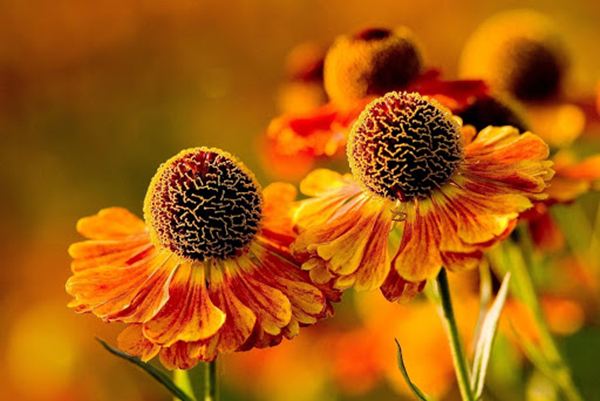
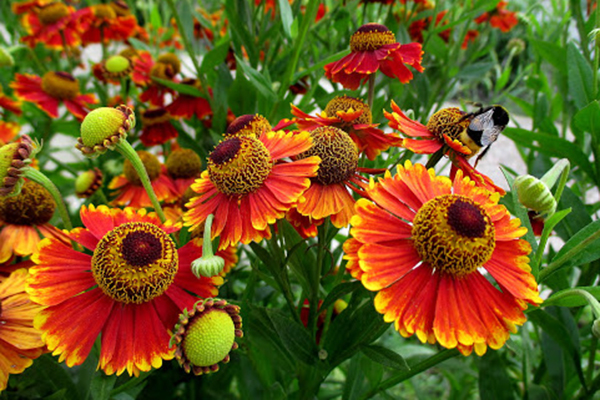

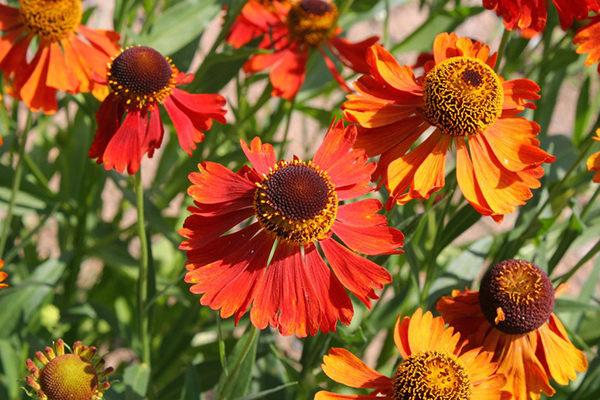
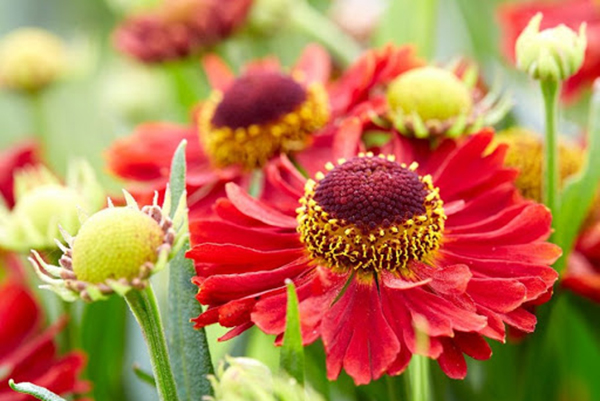
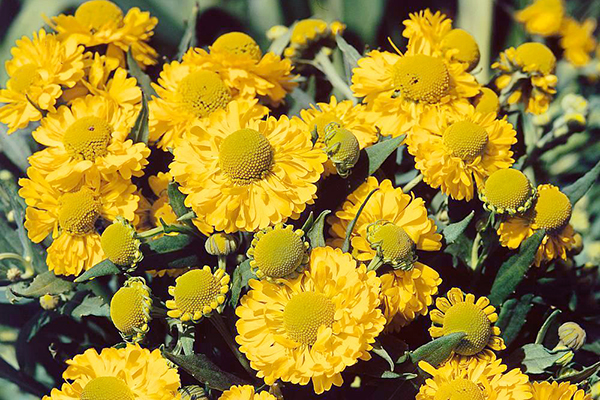
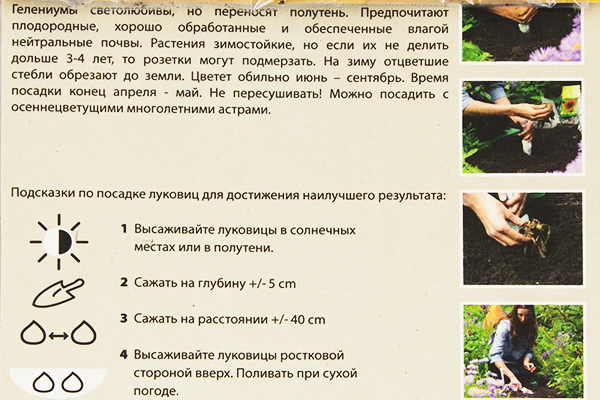
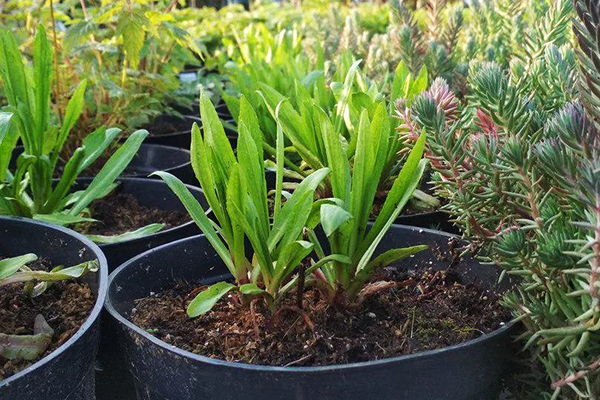
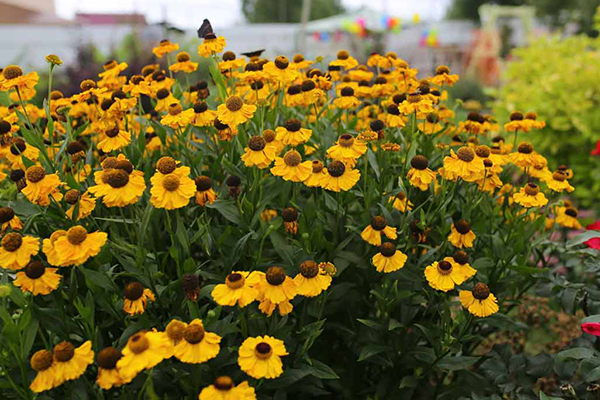
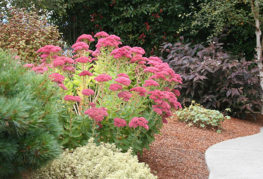
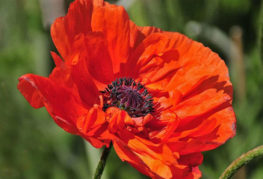
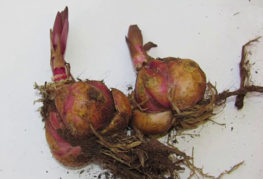
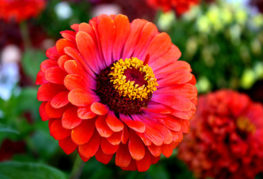
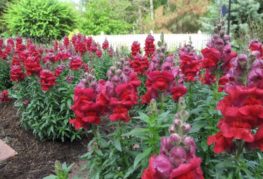
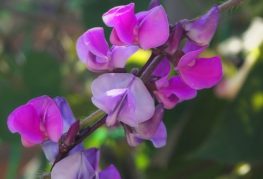
and will be published shortly.